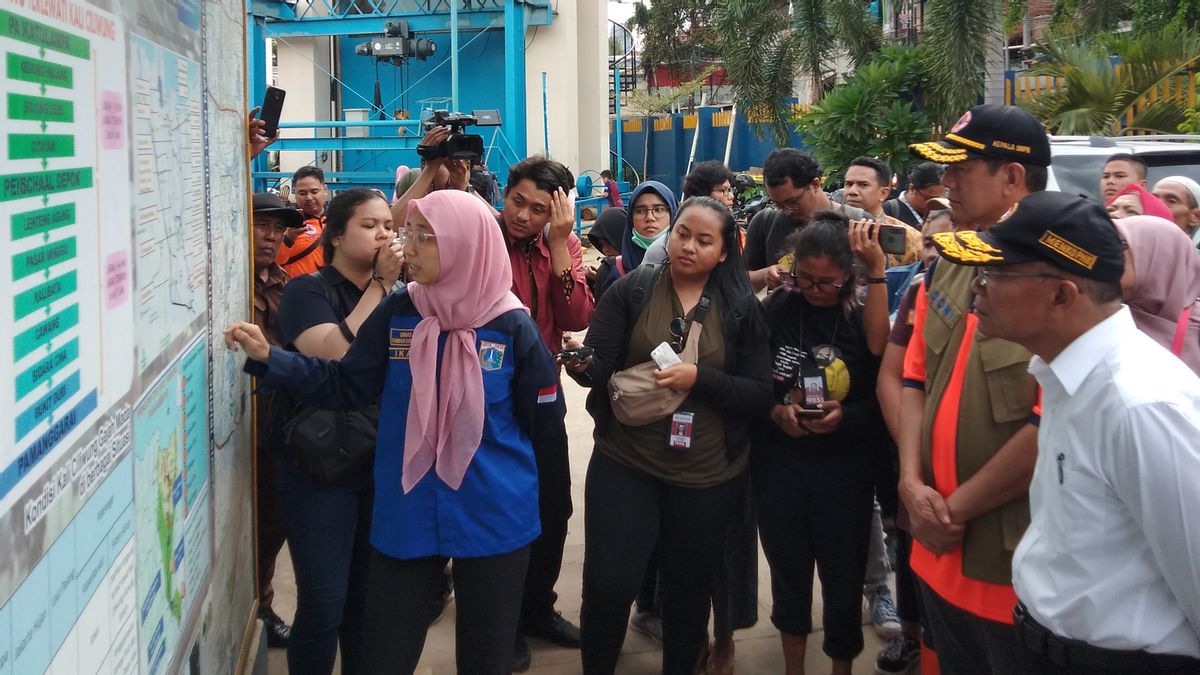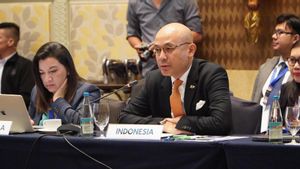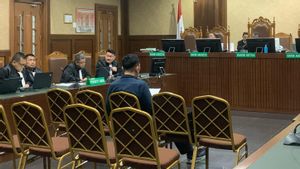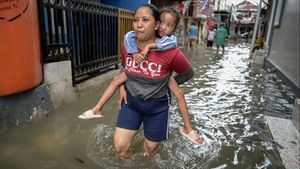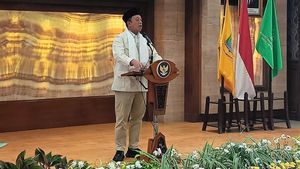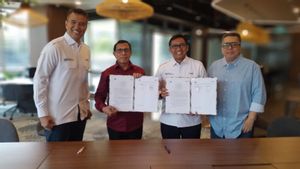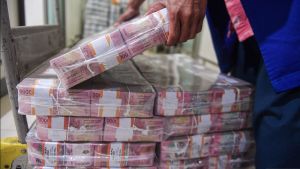JAKARTA - The Coordinating Minister for Human Development and Culture (Menko PMK) Muhadjir Effendy and the Head of the National Disaster Management Agency (BNPB) Doni Monardo monitor the water level at the Manggarai Water Gate.
In the still clear afternoon sky, Muhadjir and Doni arrived at around 15:50 WIB. Their eyes were immediately fixed on the water level of Manggarai, which began to decline at 755 cm or had the status of Alert III.
Using his personal cellphone, Muhadjir captured a picture of the process of transporting garbage that had piled up at the floodgates by an excavator, before finally being transferred to a dump truck.
The Head of the River and Coastal Division for the Central Flow System of the DKI Jakarta Provincial Government of Water Resources, Ika Agustin Ningrum, also accompanied the monitoring process carried out by the two levels of the central government.
To Muhadjir and Doni, Ika explained that high rainfall began on December 31, 2019 at 20.00 WIB to January 1, 2020 at 08.00 WIB with a water level reaching 925 cm.
Then, the water receded from January 1 morning to evening at 15.30 WIB. Ika said, the water level rose again from the afternoon to January 2 in the morning at 01.30 WIB reaching 965 cm and had the status of Alert I. This afternoon, the water level had started to recede to 750 cm with the status of Alert III.

"After previously high rainfall, the water level rose again because there was a shipment of water coming from Katulampa. Until this afternoon, finally the situation was safe because we had thrown water into the sea," Ika explained at Manggarai Water Gate, Central Jakarta, Tuesday January 2.
The impact of the opening of the Manggarai sluice gate to the sea, there are areas where the Ciliwung River is still inundated, namely in Pasar Baru and Jembatan Merah. The puddle reaches 30 cm.
Muhadjir then asked Ika about the anticipation of high water levels and handling of inundation. "If something similar happens again what should be done?" asked Muhadjir.
Ika answered that his party relies on the reservoir-making process made by the central government. "Actually, we are waiting for the Ciawi or Sukamahi Reservoir from the PUPR Ministry, sir," said Ika.
As if not satisfied with Ika's answer, Doni also chimed in the question. "So, if the Ciawi Reservoir (was built), but the high rainfall in Jakarta, like yesterday, is still flooded, right?" said Doni.
Ik tried to explain further. Anies' subordinate explained that the drainage system built in DKI has indeed exceeded the usage limit set out in the flood control master plan.
"For our drainage channel, we will return to 25 years. The flood that occurred yesterday, when the drainage returns are more than 100 years," Ika explained. "So, if it rains more than the 25th birthday, then in the end it doesn't have enough capacity, sir."

So, what the SDA Office can do now is to open the Manggarai floodgate so that water flows more quickly into the sea. Given, the sea level is also not tide.
Hearing this answer, Muhadjir frowned again. He alluded to the accumulation of garbage at the floodgates which resulted in obstructed water flow.
Ika answered that his party would maximize waste transportation by heavy equipment such as excavators and dump trucks. In addition, reserves of fuel oil (BBM) have also been prepared.
"We have anticipated things like this. During a rainy period like this, we already stock up on fuel from Pertamina. We try our best to handle the transportation of Manggarai waste as well," added Ika.
The English, Chinese, Japanese, Arabic, and French versions are automatically generated by the AI. So there may still be inaccuracies in translating, please always see Indonesian as our main language. (system supported by DigitalSiber.id)
